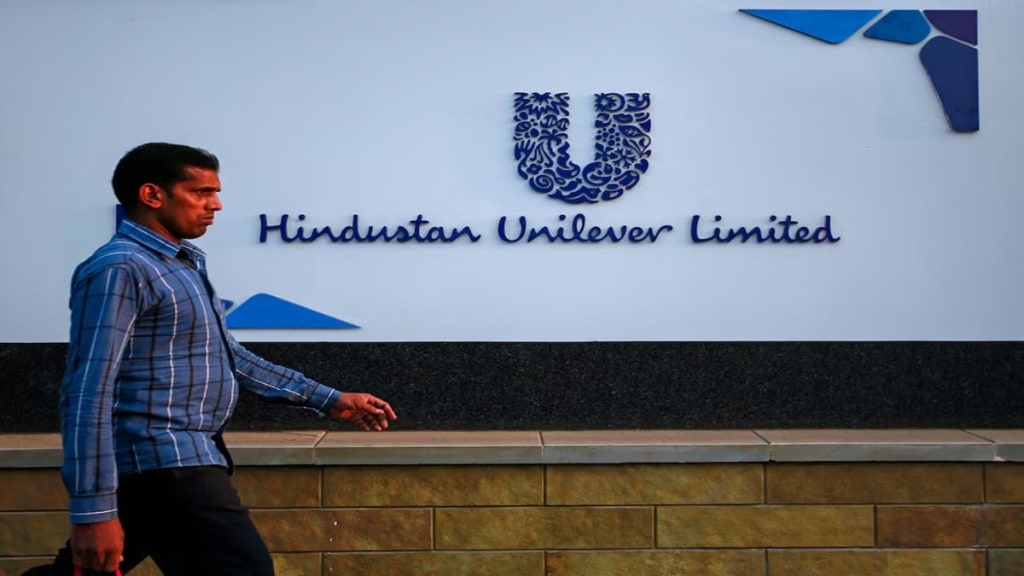As rural consumption picks up and the broader FMCG sector begins to recover from a prolonged demand slowdown, Hindustan Unilever (HUL) is gearing up for a strong FY26. Backed by a multi-pronged strategy spanning innovation, affordability, and digital expansion, the company is eyeing double-digit earnings growth, according to Nuvama.
The FMCG major released its annual report for FY25 wherein it highlighted that one of the central themes driving the company’s anticipated growth is its sharpened focus on Direct-to-Consumer (D2C) channels, affordability-led innovation and digital engagement. HUL
With urban demand expected to recover more gradually, leading FMCG players are expanding their direct distribution networks in rural areas, aggressively launching smaller pack sizes, and undertaking hyper-local promotions to tap into rising rural demand.
HUL’s FY26 outlook
In its annual report, HUL stated that the company is expected to record a better performance Q2FY26 and Q3FY26 compared with the previous year on the back of the improved operating environment. In addition, it maintained that gradual recovery has already begun in Q1FY26.
EBITDA margin guidance, it added, was revised to 22–23 per cent for the next two–three quarters (from 23–24 per cent earlier) due to an increase in investments, particularly in trade channels, product quality and A&P. Nuvama said, “Gross margin moderation is driven by the price-value equation as the company takes smaller, gradual price hikes rather than a full pass-through.”
HUL forecasted double-digit EPS growth driven by overall FMCG market expansion and improved pricing. HUL’s pricing growth remains in low single digits, below the industry average of 4 per cent. According to Nuvama, while palm fatty acid distillate (PFAD) costs remained elevated, a potential easing in input prices could support margin improvement ahead. “More clarity is expected in two–three months, with potential for a modest easing in commodity prices,” it added.
Key growth drivers
Strengthening D2C and digital muscle
One of the central themes driving HUL’s anticipated growth is its sharpened focus on Direct-to-Consumer (D2C) channels and digital engagement. In FY25, HUL significantly boosted its D2C presence by acquiring a 90.5 per cent stake in Minimalist, a D2C brand with Rs 5,000 crore in revenue in the financial year, for Rs 2,700 crore.
HUL also increased its digital media spends to 40 per cent of its total media budget. It also collaborated with 12,000 influencers to amplify its digital reach. This is supported by its in-house media-planning tool that uses category-specific data to customise media spends across platforms for different brands and consumer cohorts.
Affordability meets innovation
HUL is actively shifting its portfolio mix ‘Future Core’ and ‘Market Makers’, achieving a 200 basis point shift in FY25, thereby strengthening its presence in high-growth spaces and future-facing portfolio. While the ‘Future Core’ brands that include premiumised brands with broadening each are growing faster than the market, ‘Market Makers’ are building the categories of the future and contributed Rs 70 billion to the business in FY25.
HUL is also revitalising existing brands with significant relaunches, such as Lifebuoy and Glow & Lovely. New product innovations include Vim UltraPro floor cleaner, Stratos soap bars in Lux and Lifebuoy, and Dove Scalp + Hair Therapy.
The company is also making efforts to make liquid formats more accessible and affordable, for example, by launching Rin Matic Liquid detergent at Rs 99 for 800ml and Bru Coffee at Rs 2. HUL is also strategically narrowing the price gap between sachets and larger packs to accelerate pack upgradation
Balanced pricing and smart portfolio strategy
The company took advantage of softening raw material prices to cut prices in Home Care, which led to an uptick in volumes. Personal Care pricing remained calibrated amid some inflation, while the Foods portfolio saw marginal increases. Overall, the industry’s average pricing growth stands at around 4 per cent
An expansive distribution network
HUL has 3,500 distributors and a reach of 9 million-plus outlets, with 69 per cent through direct value-added distribution. In FY25, HUL informed, Q-Commerce assortment was doubled versus FY24, thereby contributing 2–3 per cent to India business; e-commerce accounted for 7–8 per cent. The e-B2B app, Shikhar, has onboarded over 1.4 million retailers (up from 1.3 million in FY24) with a 70 per cent monthly active user rate. A Beauty Premium Retail Organisation (PRO) has also been launched to specifically bolster distribution and demand generation for premium beauty products.
Brand leadership and market presence intact
HUL gained penetration in 75 per cent of its portfolio and leads in 85 per cent of categories. The FMCG major’s 50-plus brands span 15 categories and 19 of these brands generate revenue over Rs 10 billion each.
To conclude…
As HUL ramps up its innovation engine and rural push, investor attention will be on how quickly urban demand rebounds and whether input cost easing materialises, supporting its margin ambitions.
